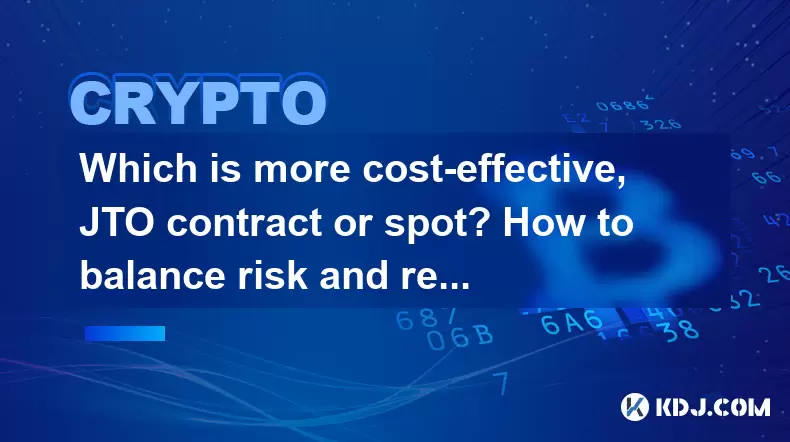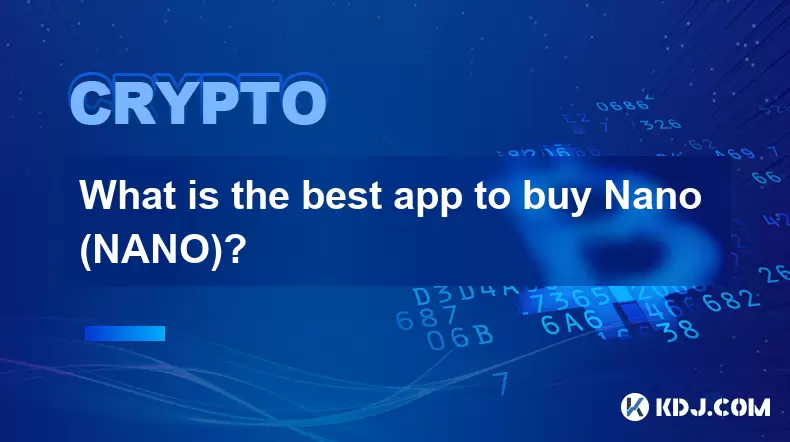-
 Bitcoin
Bitcoin $118700
1.60% -
 Ethereum
Ethereum $4230
-1.16% -
 XRP
XRP $3.197
-2.08% -
 Tether USDt
Tether USDt $1.000
-0.01% -
 BNB
BNB $803.3
-0.46% -
 Solana
Solana $183.2
0.06% -
 USDC
USDC $0.9999
0.00% -
 Dogecoin
Dogecoin $0.2343
-3.95% -
 TRON
TRON $0.3390
1.00% -
 Cardano
Cardano $0.8020
-1.93% -
 Hyperliquid
Hyperliquid $45.18
2.39% -
 Chainlink
Chainlink $22.04
3.02% -
 Stellar
Stellar $0.4449
-1.66% -
 Sui
Sui $3.872
-2.14% -
 Bitcoin Cash
Bitcoin Cash $570.6
-0.37% -
 Hedera
Hedera $0.2593
-2.92% -
 Ethena USDe
Ethena USDe $1.001
-0.01% -
 Avalanche
Avalanche $23.83
-3.79% -
 Litecoin
Litecoin $124.5
1.83% -
 Toncoin
Toncoin $3.335
-2.74% -
 UNUS SED LEO
UNUS SED LEO $9.029
0.26% -
 Shiba Inu
Shiba Inu $0.00001363
-2.31% -
 Uniswap
Uniswap $10.93
-1.42% -
 Polkadot
Polkadot $4.060
-2.29% -
 Dai
Dai $1.000
-0.01% -
 Cronos
Cronos $0.1631
2.71% -
 Ethena
Ethena $0.7746
3.06% -
 Pepe
Pepe $0.00001208
-3.73% -
 Bitget Token
Bitget Token $4.445
-1.47% -
 Monero
Monero $268.7
-2.30%
Which is more cost-effective, JTO contract or spot? How to balance risk and return?
JTO contracts can be more cost-effective due to leverage, but spot trading offers less risk; balance depends on your investment goals and risk tolerance.
May 07, 2025 at 07:15 pm

Which is more cost-effective, JTO contract or spot? How to balance risk and return?
When considering the cost-effectiveness of trading JTO (Jito) in the cryptocurrency market, investors often face a choice between trading via JTO contracts or spot markets. Each method has its own set of advantages and potential risks, and understanding these can help in making more informed decisions. This article will delve into the specifics of JTO contracts and spot trading, their cost implications, and how to balance the risk and return associated with each.
Understanding JTO Contracts and Spot Trading
JTO contracts are derivative instruments that allow traders to speculate on the future price movements of Jito without owning the underlying asset. These contracts can be futures or options, and they are traded on various cryptocurrency exchanges. Spot trading, on the other hand, involves the direct buying and selling of Jito at the current market price on an exchange.
Cost-Effectiveness of JTO Contracts
The cost-effectiveness of JTO contracts can be assessed based on several factors:
Leverage: JTO contracts often allow traders to use leverage, which means they can control a larger position with a smaller amount of capital. This can amplify both gains and losses. While leverage can make trading more cost-effective by requiring less upfront capital, it also increases the risk.
Transaction Fees: The fees associated with trading JTO contracts can vary depending on the exchange and the type of contract. Futures contracts might have lower fees than options, but they also come with the risk of margin calls.
Funding Rates: For perpetual futures contracts, traders need to consider funding rates, which are periodic payments made between long and short positions. These rates can either add to the cost of holding a position or provide additional income.
Settlement and Expiry: JTO contracts have specific settlement dates or can be perpetual. The cost-effectiveness can be affected by how close the contract is to expiry and the associated settlement fees.
Cost-Effectiveness of JTO Spot Trading
Spot trading JTO involves different cost considerations:
Direct Ownership: When trading on the spot market, investors directly own the Jito tokens. This eliminates the need for leverage and reduces the risk associated with margin calls.
Transaction Fees: Spot trading typically involves straightforward transaction fees, which can vary by exchange but are generally transparent and predictable.
No Expiry: Unlike contracts, spot trading does not have an expiry date, which means investors can hold their positions indefinitely without worrying about settlement costs.
Liquidity: The liquidity of the JTO spot market can affect cost-effectiveness. Higher liquidity usually results in lower slippage and better price execution.
Balancing Risk and Return in JTO Contracts
Balancing risk and return when trading JTO contracts requires a strategic approach:
Risk Management: Use stop-loss orders to limit potential losses. Set these orders at levels that align with your risk tolerance and trading strategy.
Position Sizing: Determine the size of your positions based on your overall portfolio and the amount of capital you are willing to risk. Smaller positions can help manage risk while still allowing for potential gains.
Diversification: Do not put all your capital into JTO contracts. Diversify across different assets and trading strategies to spread risk.
Leverage Management: Be cautious with leverage. While it can enhance returns, it can also lead to significant losses. Use leverage conservatively and understand the implications fully.
Balancing Risk and Return in JTO Spot Trading
Balancing risk and return in JTO spot trading involves different considerations:
Long-Term Holding: Consider holding Jito for the long term if you believe in its fundamental value. This can reduce the impact of short-term market volatility.
Dollar-Cost Averaging: Implement a dollar-cost averaging strategy to spread out your investment over time. This can help mitigate the risk of investing a lump sum at a peak price.
Portfolio Allocation: Allocate only a portion of your portfolio to Jito to maintain diversification. This helps in managing overall risk.
Market Analysis: Conduct thorough market analysis to understand the factors that can affect Jito's price. Use both technical and fundamental analysis to inform your trading decisions.
Comparing JTO Contracts and Spot Trading
When comparing the cost-effectiveness of JTO contracts and spot trading, it's essential to consider your investment goals and risk tolerance:
Short-Term vs. Long-Term: JTO contracts are generally better suited for short-term trading strategies due to their leverage and expiration dates. Spot trading is more suitable for long-term investment strategies.
Risk Tolerance: If you have a high risk tolerance and are comfortable with the potential for significant losses, JTO contracts might be more appealing. For those with a lower risk tolerance, spot trading offers a more stable approach.
Capital Requirements: JTO contracts can be more cost-effective in terms of capital requirements due to leverage. However, this comes with increased risk. Spot trading requires more capital upfront but is less risky.
Market Conditions: The choice between JTO contracts and spot trading can also depend on current market conditions. In highly volatile markets, contracts might offer more opportunities for profit, while in stable markets, spot trading might be more advantageous.
Practical Steps for Trading JTO Contracts
To start trading JTO contracts, follow these steps:
Choose an Exchange: Select a reputable cryptocurrency exchange that offers JTO contracts. Research the fees, leverage options, and user interface to find the best fit for your needs.
Fund Your Account: Deposit funds into your exchange account. Ensure you have enough capital to cover potential margin calls if using leverage.
Select a Contract: Choose the type of JTO contract you want to trade, such as futures or options. Consider the expiry date and leverage available.
Set Up Your Trade: Decide on your entry and exit points. Use trading tools like stop-loss and take-profit orders to manage your risk.
Monitor and Adjust: Continuously monitor your positions and adjust your strategy as needed. Be prepared to close positions if the market moves against you.
Practical Steps for Trading JTO Spot
To start trading JTO spot, follow these steps:
Choose an Exchange: Select a reputable cryptocurrency exchange that offers JTO spot trading. Compare the fees and liquidity to find the best platform.
Fund Your Account: Deposit funds into your exchange account. Ensure you have enough capital to buy the amount of Jito you want.
Place an Order: Decide on the type of order you want to place, such as a market order or a limit order. A market order will execute immediately at the current market price, while a limit order will only execute at your specified price.
Monitor Your Position: Keep an eye on the market and your position. Be prepared to sell your Jito if it reaches your target price or if market conditions change.
Withdraw or Hold: Decide whether to hold your Jito for the long term or withdraw it to a secure wallet. Consider your investment goals and market outlook when making this decision.
Frequently Asked Questions
1. Can I switch between JTO contracts and spot trading easily?
Yes, you can switch between JTO contracts and spot trading by using an exchange that offers both options. However, be aware of the different risk profiles and capital requirements associated with each method.
2. How do I determine the right amount of leverage to use in JTO contracts?
The right amount of leverage depends on your risk tolerance and trading strategy. Start with lower leverage to understand the market dynamics and gradually increase it as you gain experience and confidence.
3. What are the tax implications of trading JTO contracts versus spot trading?
Tax implications can vary by jurisdiction, but generally, profits from JTO contracts are treated as capital gains or income, depending on the holding period and local tax laws. Spot trading profits are typically treated as capital gains. Consult a tax professional to understand the specific implications for your situation.
4. How can I stay updated on JTO market trends and news?
To stay updated on JTO market trends and news, follow reputable cryptocurrency news sources, join Jito-focused communities on social media, and use trading platforms that provide real-time market data and analysis.
Disclaimer:info@kdj.com
The information provided is not trading advice. kdj.com does not assume any responsibility for any investments made based on the information provided in this article. Cryptocurrencies are highly volatile and it is highly recommended that you invest with caution after thorough research!
If you believe that the content used on this website infringes your copyright, please contact us immediately (info@kdj.com) and we will delete it promptly.
- Gemini AI's Crypto Crystal Ball: Predicting 1000x Gains with Meme Coins?
- 2025-08-11 02:50:12
- Cold Wallet Crypto Presale: Your Price Edge in the Wild West of Crypto
- 2025-08-11 02:50:12
- Rollblock, Solana, and Cardano: Unpacking the Hottest Trends in Crypto
- 2025-08-11 03:50:12
- Cold Wallet: Your Ticket to Massive ROI in the Wild World of Crypto
- 2025-08-11 03:50:12
- BONK Price Check: Solana Meme Coin Faces Ethereum Migration Heat?
- 2025-08-11 03:55:19
- Lil Pepe: The Undervalued Meme Coin Set to Explode in 2025?
- 2025-08-11 02:30:12
Related knowledge

How to purchase Aragon (ANT)?
Aug 09,2025 at 11:56pm
Understanding Aragon (ANT) and Its PurposeAragon (ANT) is a decentralized governance token that powers the Aragon Network, a platform built on the Eth...

Where to trade Band Protocol (BAND)?
Aug 10,2025 at 11:36pm
Understanding the Role of Private Keys in Cryptocurrency WalletsIn the world of cryptocurrency, a private key is one of the most critical components o...

What is the most secure way to buy Ocean Protocol (OCEAN)?
Aug 10,2025 at 01:01pm
Understanding Ocean Protocol (OCEAN) and Its EcosystemOcean Protocol (OCEAN) is a decentralized data exchange platform built on blockchain technology,...

Where can I buy UMA (UMA)?
Aug 07,2025 at 06:42pm
Understanding UMA and Its Role in Decentralized FinanceUMA (Universal Market Access) is an Ethereum-based decentralized finance (DeFi) protocol design...

How to buy Storj (STORJ) tokens?
Aug 09,2025 at 07:28am
Understanding Storj (STORJ) and Its Role in Decentralized StorageStorj is a decentralized cloud storage platform that leverages blockchain technology ...

What is the best app to buy Nano (NANO)?
Aug 09,2025 at 03:35am
Understanding Nano (NANO) and Its Unique FeaturesNano is a feeless, instant cryptocurrency designed for fast peer-to-peer transactions. Unlike many ot...

How to purchase Aragon (ANT)?
Aug 09,2025 at 11:56pm
Understanding Aragon (ANT) and Its PurposeAragon (ANT) is a decentralized governance token that powers the Aragon Network, a platform built on the Eth...

Where to trade Band Protocol (BAND)?
Aug 10,2025 at 11:36pm
Understanding the Role of Private Keys in Cryptocurrency WalletsIn the world of cryptocurrency, a private key is one of the most critical components o...

What is the most secure way to buy Ocean Protocol (OCEAN)?
Aug 10,2025 at 01:01pm
Understanding Ocean Protocol (OCEAN) and Its EcosystemOcean Protocol (OCEAN) is a decentralized data exchange platform built on blockchain technology,...

Where can I buy UMA (UMA)?
Aug 07,2025 at 06:42pm
Understanding UMA and Its Role in Decentralized FinanceUMA (Universal Market Access) is an Ethereum-based decentralized finance (DeFi) protocol design...

How to buy Storj (STORJ) tokens?
Aug 09,2025 at 07:28am
Understanding Storj (STORJ) and Its Role in Decentralized StorageStorj is a decentralized cloud storage platform that leverages blockchain technology ...

What is the best app to buy Nano (NANO)?
Aug 09,2025 at 03:35am
Understanding Nano (NANO) and Its Unique FeaturesNano is a feeless, instant cryptocurrency designed for fast peer-to-peer transactions. Unlike many ot...
See all articles

























































































